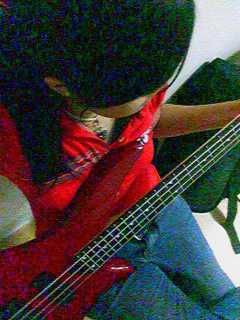Criminals on Wheels
Skateboarding is just one of the extreme sports I am presently practicing on, but it seems that I’ll be having trouble looking for a place to stay.
We once had a skate spot at our village last year. It was at a street corner in front of our friend’s house. During weekends an obstacle would be placed in the center, and that’s where my friends do their tricks. However, it came to an end when one of them caused an accident by crashing on a motorcycle passing by that street, add to that the unending complaints a neighbor for the noises we made. Since then, the number of skateboarders in our place decreased, until such time that only three were left to play to continue playing – me and and my two friends.
When I moved in to Manila, I met a group of skateboarders that eventually became my friends. We hung out and skated at Lawton, Manila, on the stage behind the big Andres Bonifacio Monument; and sometimes in front of the former Metropolitan Theater.
Our frequent practices at Lawton attracted other groups of skateboarders. The idea that Liwasang Bonifacio spread and soon dozens of skaters came to play at our ‘spot.’ They slided at the the thick marble railings, ollied (or jumped) at the tiled stairs and did tricks at the ledges of the stage. It was a fact that their ‘improvised ramp’ were made of materials that could break if stomped or left upon by a harder material, like wood and metal. And so you could imagine the ravages caused: cracks along the edges of the marble railings and chipped-off tiles at some parts of the stairs.
Authorities forbade to skaters to play at these areas. So my friends stayed at the concrete area and played on the obstacles they made by themselves. But the others, or those not originallly from our area, still tampered on the stage continously. Until the dreaded day came: we are totally banned from playing at Liwasang Bonifacio.
So we were forced to play at other places – beside the University of Manila, or in front of the Metropolitan Theater. We chose the latter, and it is still our skate spot until this day.
These experiences are not the worst, when it comes to skateboard bans and clashes with the authorities. In Norway, skateboarding is totally forbidden because of the numerous injuries it caused, and skateboarders would even go to the forests and other secluded areas just to skate.
There are other skate spots in Metro Manila besides. There is one in Mendiola, Marikinia, Sucat and inside the UP campus. Still, I could not consider those skate areas to be permanent skate spots, just like what we experienced in Lawton. There is still a tendency for authorities to ban it.
Moreover, it is just street skating. Vert skating, or performing tricks at huge obstacles like half pipes (the structures resembles an empty swimming pool) is not that prevalent anymore. Huge ramps and major playing obstacles are set up only during events like the X-Games and other skateboard competitions. So for sure, the usual skate spots would just be composed of a simple obstacle, the streetside ledges and and of course, the concrete streets.
In perception of who is to blame, I will not totally take side on the skateboarders, even if I am a skater myself. The problem and the solution lies on both sides. There are still those reckless skateboarders that does not know where to skate. The damages and injuries they have caused – to themselves or to other people- also gave the authorities enough reason to prohibit them from playing in the area, and in consequence all the skateboarders were wiped out – even the good ones.
The authorities may have a good justification as to why they clear public and public properties of from skaters, but they should at least have a counterpart action. If provided would have been provided from the start, skate parks could be constructed by now, and so authorities will not anymore worry if a property will be invaded once again by a group of skaters whose goal is only to play, practice and perfect their tricks.
Therefore the deal must be met halfway. But considering the present economic status and the government’s priorities, it is less likely to be compromised easily.
Yet skateboarders could do their part. There is still nothing wrong with skateboarding, it is actually one of the most developed extreme sport. But we should still know the limitations of our playing area – even of we are street skaters. To skate out in the streets does not mean damaging public facilities, invading private properties and sacrificing the safety of others and ourselves. ‘Skateboard is not a crime’ definitely has a point, but not a reason for carelessness and deliquency.
Tuesday, June 12, 2007
Subscribe to:
Post Comments (Atom)







No comments:
Post a Comment